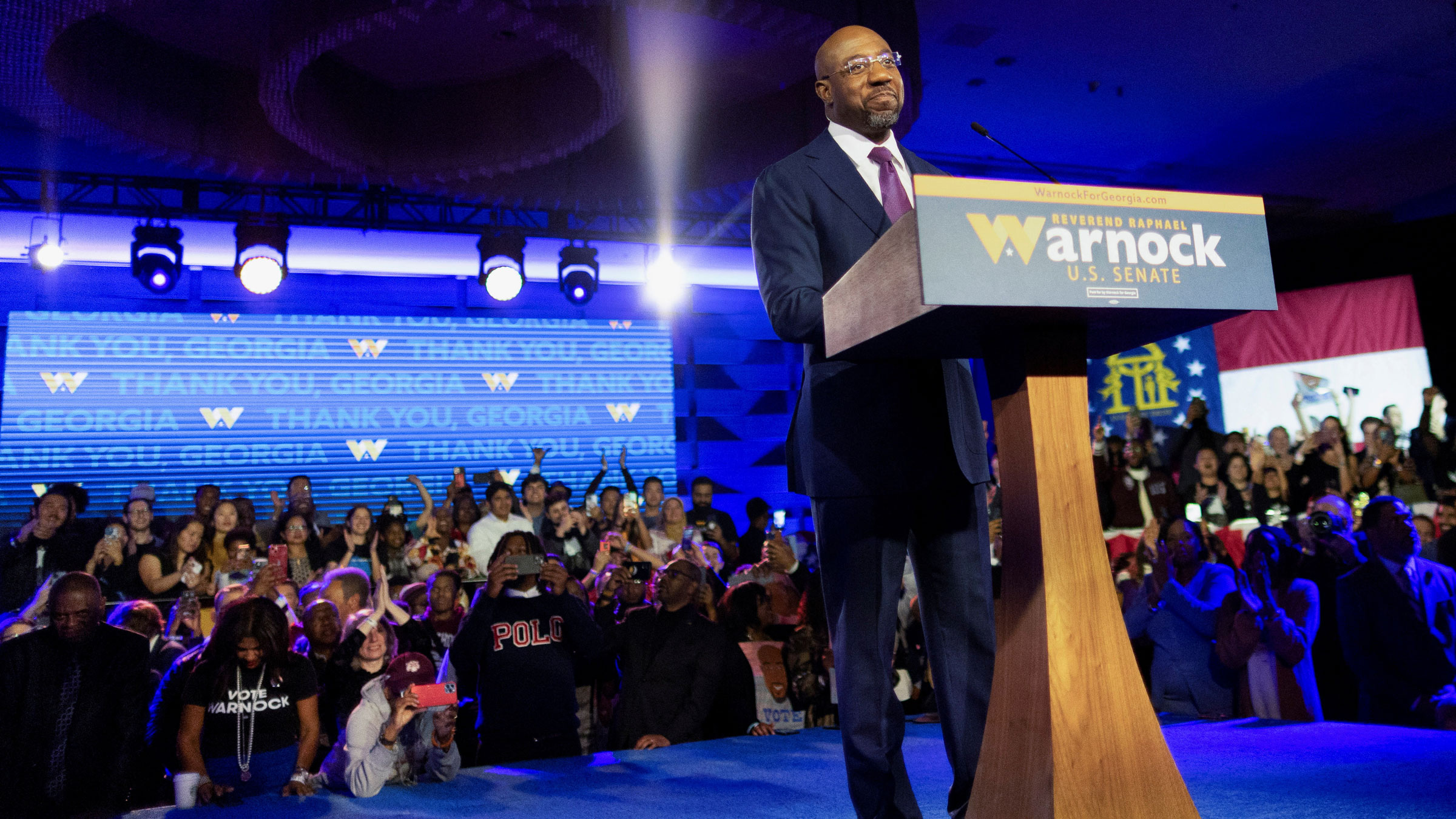

Sen. Raphael Warnock remains undefeated. After being pushed to another runoff in November, the Democrat asked voters in Georgia to put him over the top “one more time” in December – and, once again, they delivered.
Since November 2020, Warnock has been the leading vote-getter in four consecutive Georgia Senate elections. But because of state law requiring statewide candidates to get a majority to win a general election, Warnock had to double the feat in both his 2020 special election and his 2022 bid for a full six-year term.
His victory in this head-to-head contest with Republican nominee Herschel Walker means Democrats will add to their already-secured Senate majority, with 51 seats to the GOP’s 49, and solidify the Peach State as a potentially decisive 2024 presidential battleground.
As the 2022 midterm cycle spins to its end, here are key takeaways from this final election night in Georgia:
51st seat gives Democrats true majority: Democrats had already clinched control of the Senate, with 50 seats secured last month, which would allow Vice President Kamala Harris to cast the tie-breaking vote as she does now. But winning a 51st seat, thanks to Warnock’s victory Tuesday, comes with important benefits for the Democrats running the Senate and for President Joe Biden’s administration.
The party will now enter 2023 with a true Senate majority – one that won’t require the power-sharing agreement that has been in place over the last two years in an evenly divided chamber. That outright majority means that Democrats will have the majority on committees, allowing them to advance Biden’s nominees more easily.
Georgia is a swing state until further notice: As long as former President Donald Trump remains an influential figure in Republican politics, Georgia is poised to be a crucial Election Day battleground – especially when federal offices are on the ballot.
If there was any doubt before Tuesday, it’s been erased now. Walker was Trump’s hand-picked candidate to take on Warnock and he flamed out despite first running on a ticket with a popular Republican governor and then, this time, with that same governor’s express endorsement and support on the campaign trail.
Kemp’s inability to pull Walker over the finish line says less about him – or even Walker, a flawed candidate in any setting – than the state’s shifting partisan alignment. Changing demographics, an evolving economy and strategic, tenacious organizing by Democrats have made a beacon of the Old South a legitimate swing state.
On now to 2024.
The Democratic turnout machine strikes again: After the 2020 election, Georgia Republicans passed a controversial law that, among other things, reduced the amount of time between a November election and potential runoff, creating a condensed timeline that narrowed the window for mail-in voters and reduced the number of days to vote early in-person.
It didn’t matter.
The Democratic turnout machine in Georgia over the past four weeks – with a running start that goes back years and owes heavily to the groundwork by Stacey Abrams and her allies – once again delivered in a hotly contested race that attracted tens of millions of dollars in spending by the campaigns and national organizations.
Read more takeaways here.
